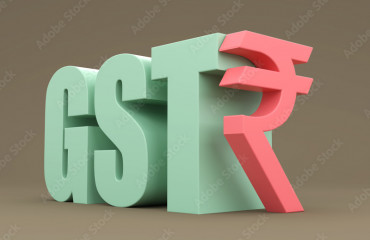
Two sets of data released by the government on the eve of the interim budget painted a picture of healthy fiscal performance.
Two sets of data released by the government on the eve of the interim budget painted a picture of healthy fiscal performance.
The central government's fiscal deficit in the first nine months of the current financial year stood at ₹9.82 trillion, or 55% of the annual estimate of ₹17.87 trillion, a moderation from the comparable period in the year before, according to data released by the Controller General of Accounts (CGA). Separately, central and state governments collected ₹1.72 trillion in goods and services tax (GST) revenue in January, the second highest since the indirect tax was rolled out more than six years ago, the finance ministry said, quoting the revenue collection up to 5pm on Wednesday.
The fiscal deficit for the first nine months of the last financial year was at ₹9.93 trillion, or 59.8% of the annual estimate of ₹16.61 trillion for FY23. The decline in the fiscal deficit despite a jump in government spending to fuel economic growth was due to higher tax and non-tax revenue.
The Centre aims to reduce the fiscal deficit—the difference between the government's income and expenditure—to 5.9% of gross domestic product during FY24, from 6.4% in FY23, and is committed to lowering it to 4.5% of gross domestic product (GDP) by FY26. A higher fiscal deficit leads to a higher debt burden and more spending on debt servicing, which can be unhealthy for an economy and risks devaluing the currency and impacting private investments.
The robust GST revenue collection will be a shot in the arm for the government preparing to deliver its interim budget, in which a roadmap for fiscal consolidation is expected. This is the third time GST revenue receipt has crossed ₹1.7 trillion this financial year, which started off with a historic high revenue mobilization of ₹1.87 trillion in April. GST receipts for January shows a 10.4% annual growth over the ₹1.56 trillion collected in the same time a year ago.
The finance ministry said that in the April-January period this fiscal, overall GST receipts have touched ₹16.69 trillion, recording an annual growth of 11.6%. The ministry said since the latest figures only represent revenue collected till 5pm on Wednesday, the final collection for the month would be higher.
Experts said that administrative steps and strong economic growth contributed in the robust revenue receipts, which would provide more headroom for the next stage of GST reforms. "These collections relate to supply transactions of goods and services during December 2023 where there was considerable emphasis on completing audits and investigations relating to earlier years," said M.S. Mani, a partner at Deloitte India. The same tax collection trajectory in the next two months will ensure that tax collection targets are comfortably surpassed, said Mani.
CGA data showed that capital expenditure rose to ₹6.74 trillion during April-December FY24, or 67.3% of the annual estimate, from ₹4.9 trillion in the same period in FY23.Total receipts during the same period stood at ₹20.72 trillion, or 76.3% of the annual estimate, of which tax receipts stood at ₹17.3 trillion, or 74.2% of the annual estimate. Non-tax revenue stood at ₹3.12 trillion, or 103.5% of the annual estimate.
Total expenditure rose to ₹30.54 trillion, or 67.8% of the annual estimate, from ₹28.18 trillion in the corresponding period in FY23.
While the Centre has accelerated coverage and extended tenures of its flagship welfare programmes ahead of the upcoming general election, experts expect it to exceed its spending targets marginally during the ongoing fiscal year.
However, the government is likely to maintain its fiscal deficit target due to higher-than-expected tax and non-tax revenues.
"Notably, the headroom left for revenue spending in the last three months of FY2024 is slightly lower than the expenditure recorded in Q4 FY2023. Revenue expenditure appears likely to mildly overshoot the FY2024 (budget estimate), on account of major subsidies and MGNREGS," rating agency Icra said in a statement.
Under the Mahatma Gandhi National Rural Employment Guarantee Scheme, the government provides at least 100 days of guaranteed wage employment in a financial year to every household that has an adult member willing to take up unskilled manual work.
India's economy is expected to grow at 7.3% in the current year, as per the statistics ministry's first advance estimate brought out in December.
"ICRA expects a lower-than-budgeted capital expenditure to partially offset the overshooting in revenue expenditure in FY2024 compared to the budgeted target. Consequently, ICRA currently projects the (government's) total expenditure to exceed the FY2024 (budget estimate) marginally by about ₹50 billion (or ₹5,000 crore)," Icra said.
In August, Mint reported that the Union government was unlikely to meet its divestment target of ₹51,000 crore for the current fiscal year.
The government, however, expects higher non-tax revenue, including dividends from the Reserve Bank of India and state-run banks, to offset any revenue shortfall from disinvestment and maintain its fiscal deficit target for FY24.
